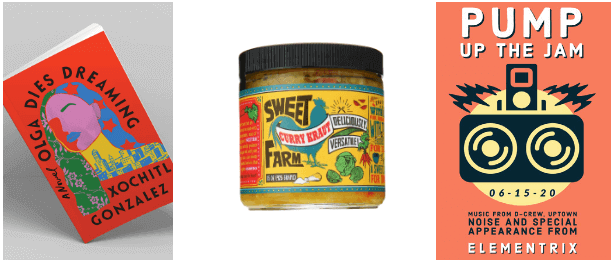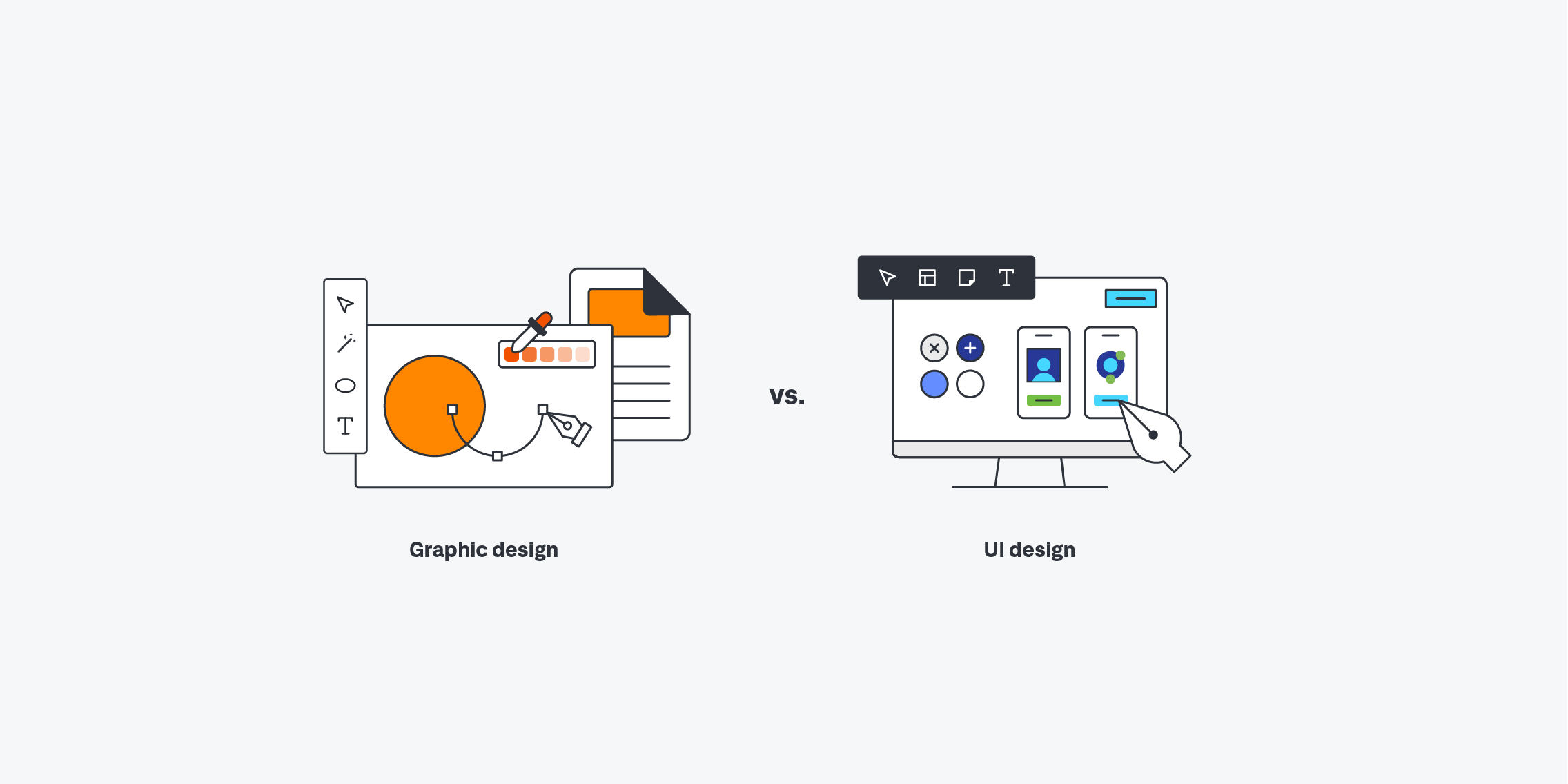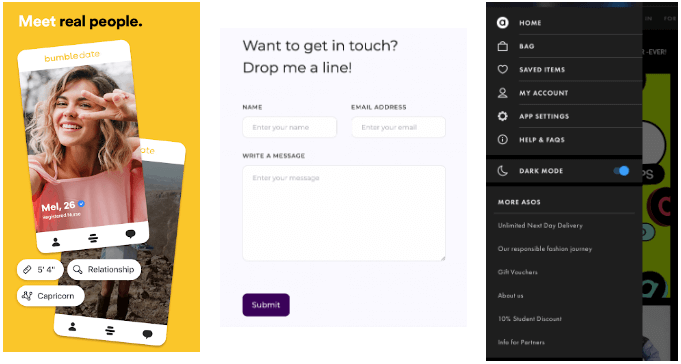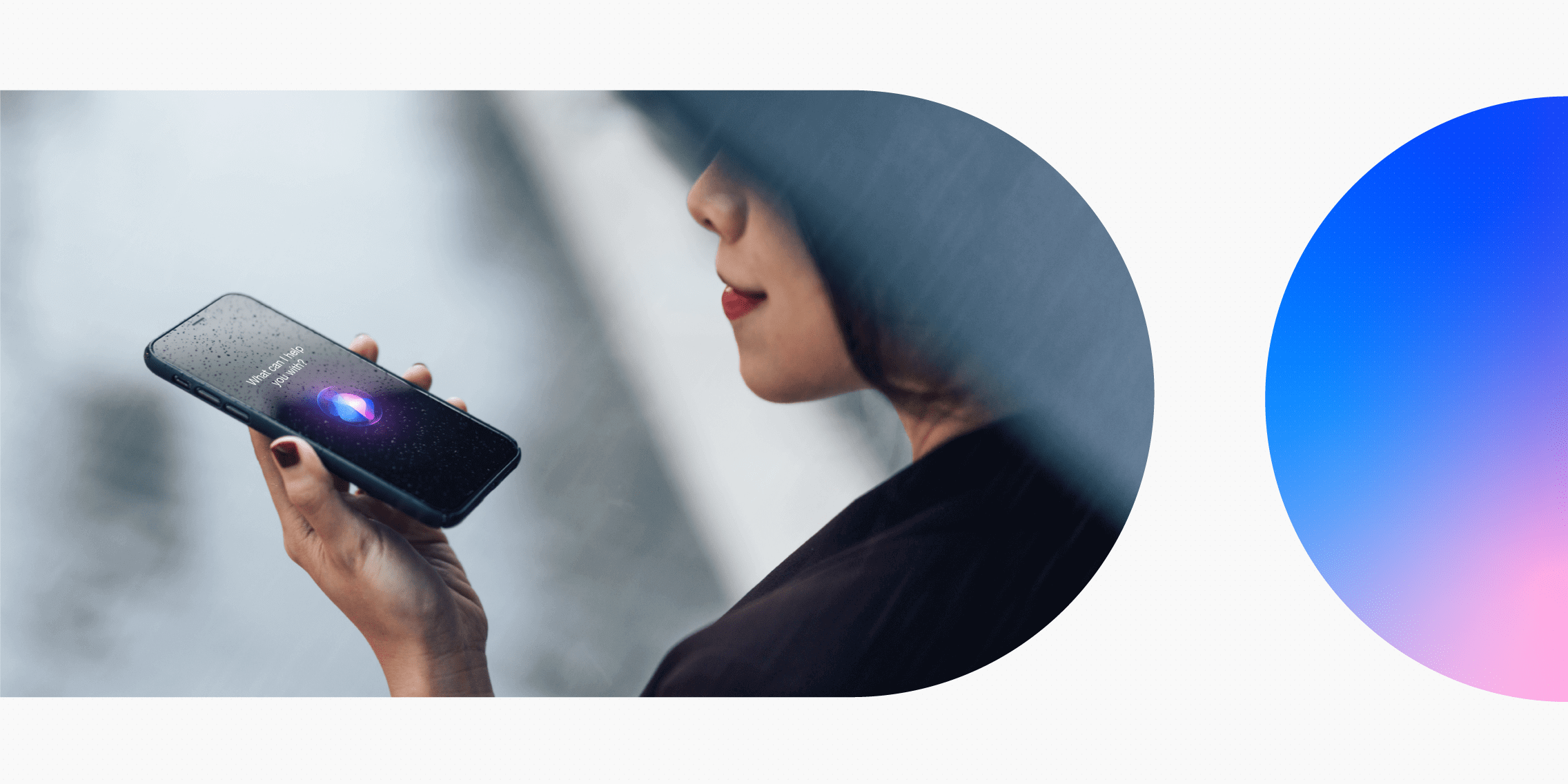At first glance, you might think that graphic design and UI design are just two different terms for the same thing. They’re both concerned with aesthetics and creating beautiful designs, right?
To a certain extent, yes—but that’s not the full story. Despite their similarities, graphic design and UI design are two distinct disciplines with several clear-cut differences. And, while graphic designers possess many essential UI design skills (and vice versa), the day-to-day reality of each role can look very different.
If you’re not sure where graphic design ends and UI design begins, this guide will help you. We’ve covered everything you need to know in order to tell the two fields apart, including:
- What’s the difference between graphic design and UI design?
- What is graphic design and what do graphic designers do? (With examples)
- What is UI design and what do UI designers do? (With examples)
- Who earns more, graphic designers or UI designers?
- Can a graphic designer become a UI designer?
- Graphic design vs. UI design: The takeaway
First, let’s start with the key differences.
What’s the difference between graphic design and UI design?
Graphic design is an artistic design discipline where visual content is used to communicate a certain message. It encompasses both print media (such as magazine covers, posters, and business cards) and digital media (such as logos, websites, and apps).
UI design is a digital-only discipline. It relates to the design of digital user interfaces—that is, the point of interaction between humans and computers. For example, when you use a mobile app or a website, all the visual and interactive elements have been created by a UI designer.
Both graphic design and UI design involve the careful composition of things like colour, space, typography, imagery, and layouts to create beautiful, harmonious designs. But, while graphic design focuses on communicating a certain message to its audience, UI design is more focused on enhancing the usability and functionality of a digital product.
We can summarise the main differences between graphic design and UI design as follows:
- Graphic design relates to both print and digital; UI design refers exclusively to the design of digital user interfaces (e.g. websites and apps)
- Graphic design typically focuses on static visuals; UI design covers both static and interactive design (for example: animations, screen transitions, and functional elements such as clickable buttons)
- With graphic design, the main goal is to communicate a certain message to the audience; with UI design, the main goal is to ensure usability and help the user to navigate and interact with the product
Now let’s define graphic design and UI design in more detail.
What is graphic design and what do graphic designers do? (With examples)
Graphic design is the art and skill of visual communication. It’s the arrangement of visual content to convey a certain message to a particular target audience.
With origins in the printing industry, graphic design has traditionally been associated with print media and advertising. Nowadays, it also applies to the digital sphere, including the visual design of things like websites, apps, logos, and more.
It’s important to note that, while graphic design can and does incorporate the design of digital assets, it does so with communication and branding in mind. The goal is ultimately to create visually appealing designs which convey a certain message or piece of information. This distinguishes graphic design from other disciplines, like UX and UI design, where the focus is on functionality, usability, and helping the end user to complete certain tasks.
What are some examples of graphic design?
Some examples of graphic design include:
- Printed posters
- Flyers and brochures (both printed and digital)
- Infographics
- Book covers
- Product labels and packaging
- Business cards
- Signs
- Website and mobile app graphics
- Logos
- Graphics for marketing and advertising campaigns
- Video game graphics

What does a graphic designer do?
Graphic designers use colours, shapes, images, and text to create all different kinds of visual content. They can work with both print and digital media, with tasks ranging from the creation of individual assets (such as designing a logo) to developing the overall visual identity of a product or brand.
No matter the project, graphic designers follow a core set of principles to create beautiful, on-brand designs. The main graphic design principles include:
- Balance: This refers to how the various graphic design elements (such as shapes, text, and images) are distributed on the page.
- Hierarchy: Visual hierarchy in graphic design communicates the importance of each element and/or message. For example, placing the most important piece of information at the top of the page in large, bold font gives it prominence in the visual hierarchy.
- Contrast: This ensures a clear distinction between individual elements, improving the overall legibility of the design.
- Colour: Graphic designers will choose their colour palettes to evoke certain emotions in the viewer, to reinforce brand identity, and to create emphasis, highlights, and contrast.
- Proximity: Proximity considers the space and distance between each element on the page, forming a visual connection between the various elements and making sure the overall design isn’t too cluttered.
Graphic designer tasks and responsibilities
Like most design jobs, the graphic designer’s role varies greatly depending on where they work. A graphic designer working for a digital product will have different tasks from, say, a graphic designer working in the publishing industry.
Generally, graphic designers are responsible for:
- Producing a variety of creative assets for online and physical platforms. This can include digital and print ads, reports, whitepapers, sales collateral, presentations, web banners, logos, and more
- Taking part in creative ideation sessions and planning/executing visual campaigns from concept through to delivery
- Supporting internal teams (or external clients) to meet their communication objectives
- Acting as a brand guardian by maintaining the brand’s visual style and personality, including the creation of templates
- Sourcing, processing, correcting, and uploading imagery
- Using tools like Illustrator, InDesign, and Photoshop to create digital designs
- Operating printing machinery (only relevant for non-digital graphic design roles)
To continue with our comparison of graphic design vs. UI design, let’s now take a closer look at what UI design is and what UI designers do.
What is UI design and what do UI designers do? (With examples)
UI design (or user interface design) is both a creative and tech-related design discipline. It refers exclusively to the design of digital product interfaces, and it’s closely linked to user experience (UX) design.
Take the example of a website. The UX designer maps out the purpose and structure of the website, making sure it has everything required to meet the end user’s needs and goals—and that its overall architecture is logical and user-friendly. It’s similar to the process of creating a blueprint for a building.
UI design then focuses on the website’s interface; the surface layer that the end user actually sees and interacts with. It considers the layout of each screen, the placement and position of all the different UI elements (such as buttons and images), as well as aesthetic properties such as colour and typography.
In that respect, UI design is very similar to graphic design. However, unlike graphic design, UI design considers both aesthetics and functionality. In addition to designing how a product interface looks, UI designers also design its interactive properties. They determine what happens when a user clicks on different elements or performs certain actions, creating animations, motion, transitions, and more.
This brings us to another key distinction between graphic design and UI design. While graphic design is about communicating a certain message, UI design is about enhancing a user’s experience with a product. As a subset of UX, UI keeps the user’s end goals in mind, helping them to find what they’re looking for, complete their tasks, and generally navigate around the website or app with ease.
What are some examples of UI design?
Some examples of UI design include:
- Websites, apps, software, and video games (more specifically: the screens, or the interface, of these products)
- Individual elements within digital products, such as buttons, menus, scrollbars, images, and typography
- Forms and text entry fields
- Animations and transitions. For example, the motion that transports you from one website page to the next
- Illustrations and custom graphics, such as logos and icons

What does a UI designer do?
UI designers are responsible for the look and feel of digital products. They work with colour, typography, layout, imagery, and spacing to create aesthetically pleasing designs for websites, apps, and software. They also take care of interactivity, adding the necessary interactive properties to individual UI elements.
Some common UI designer tasks include:
- Working closely with UX designers to conduct user research (or at least understand user research insights)
- Choosing the colour palettes, typography, and imagery that will be used throughout the digital product
- Designing UI elements such as buttons, forms, and menus
- Designing the layout of each screen or webpage
- Adding interactivity to the product interface, considering how one screen transitions to the next, and what kind of visual or audio feedback the user gets when they complete a certain action
- Creating wireframes and prototypes to communicate how the final product should look and function
- Ensuring the design is responsive—i.e. that it adapts to different screen sizes depending on which device the end user is using
You can learn more about the role in this guide: What Does a UI Designer Do?
Who earns more, graphic designers or UI designers?
If you’re weighing up graphic design vs. UI design as potential career options, you’ll want to know how they compare in terms of salary. So who earns more: graphic designers or UI designers?
Generally speaking, UI designers earn a higher average salary than graphic designers. Here’s the average salary data for both graphic and UI designers in different locations:
- In Ireland, the average UI designer salary is €58,056 per year. The average graphic designer salary is €34,736 per year.
- In the UK, the average UI designer salary is £44,959 per year. The average graphic designer salary is £26,998 per year.
- In the United States, the average UI designer salary is $85,368 per year. The average graphic designer salary is $59,306 per year.
- In Australia, the average UI designer salary is $104,916 per year. The average graphic designer salary is $73,371 per year.
We’ve only explored a handful of locations here, so it’s important to research salaries where you’re based for a more accurate picture. You can use the Indeed salary portal or similar websites.
Can a graphic designer become a UI designer?
Absolutely! Despite their differences, graphic design and UI design have lots in common.
Graphic designers are already familiar with fundamental UI design theories and principles such as colour, typography, spacing, layout, and hierarchy. As such, graphic designers have many transferable skills that directly apply to UI design—and they may already be proficient in some of the most popular UI design tools.
Graphic design is an excellent springboard to a career in UI. If you’re a graphic designer looking to make the switch, you’ll need to get to grips with the UI design process and learn the principles of user-centric digital design. The most effective way to level up your skills is through a professional UI course. You can learn more about how long it takes to become a UI designer here.
Graphic design vs. UI design: Key takeaways
Hopefully, you’re finishing this guide with a clear understanding of what graphic design and UI design are and how they differ.
To recap: graphic design is an artistic design discipline which uses visual content to communicate a particular message. It can relate to both print and digital media, covering anything from product labels and posters to book covers, websites, and apps.
UI design is a tech-related discipline which focuses on both the aesthetics and interactivity of digital user interfaces. UI designers are responsible for ensuring that websites, apps, and other digital products both look great and are easy to use and navigate.
Both graphic design and UI design are creative and rewarding career paths. But, in the digital age we live in, UI designers have the advantage of being able to find work in almost any industry. And, as we saw earlier, they tend to enjoy a higher salary, too.
Are you a graphic designer looking to break into the exciting tech industry? Start learning the lingo with this UI design glossary, or get right to the practical skills with a professional course—we’ve rounded up the best UI design courses here.




![What does a UX designer do? [2025 Update] 4 what does a ux designer do blog header image](https://www.uxdesigninstitute.com/blog/wp-content/uploads/2020/09/10_What-does-a-UX-designer-do_Image.png)

